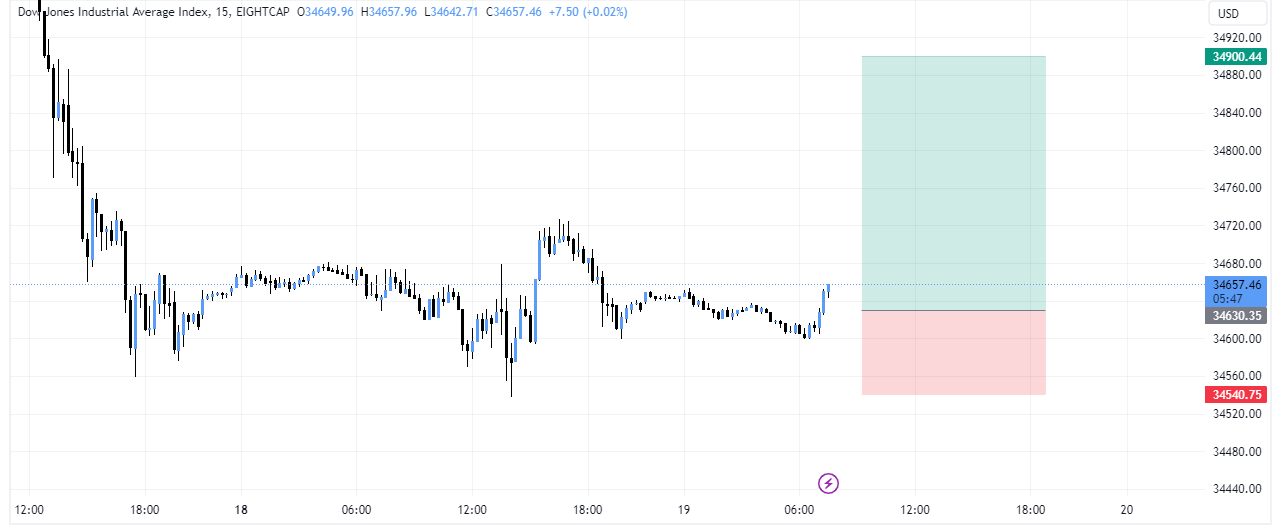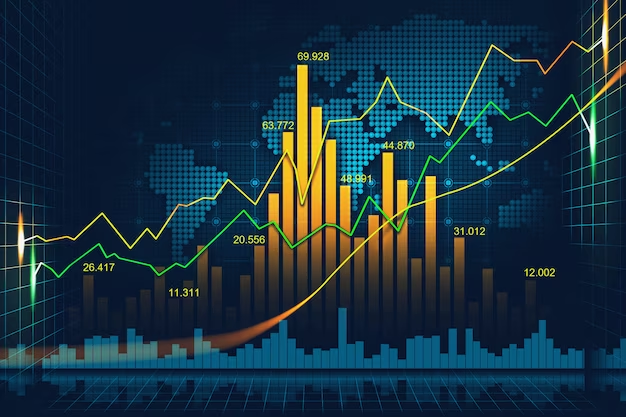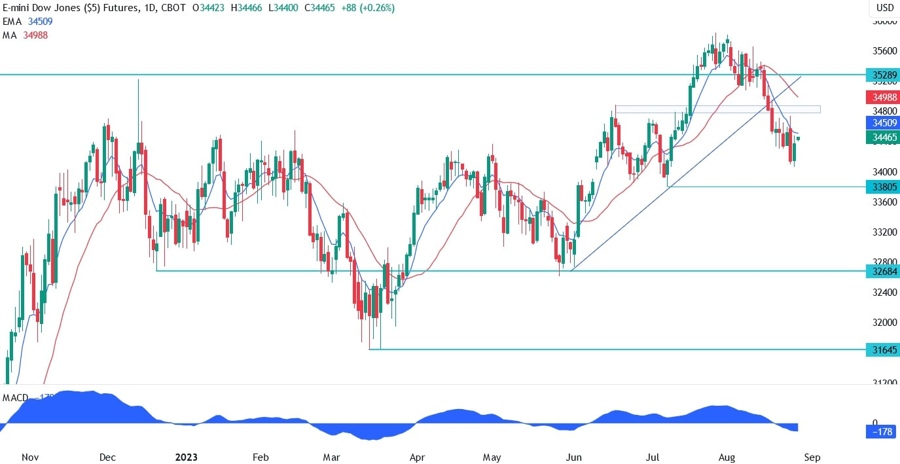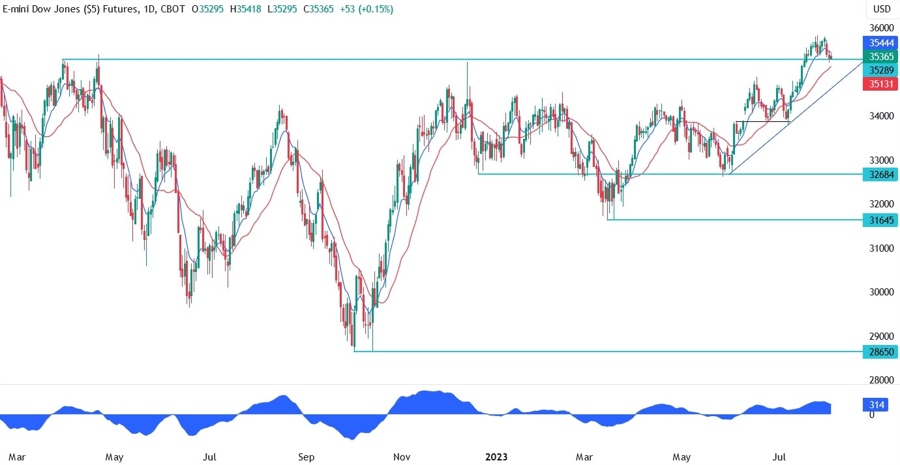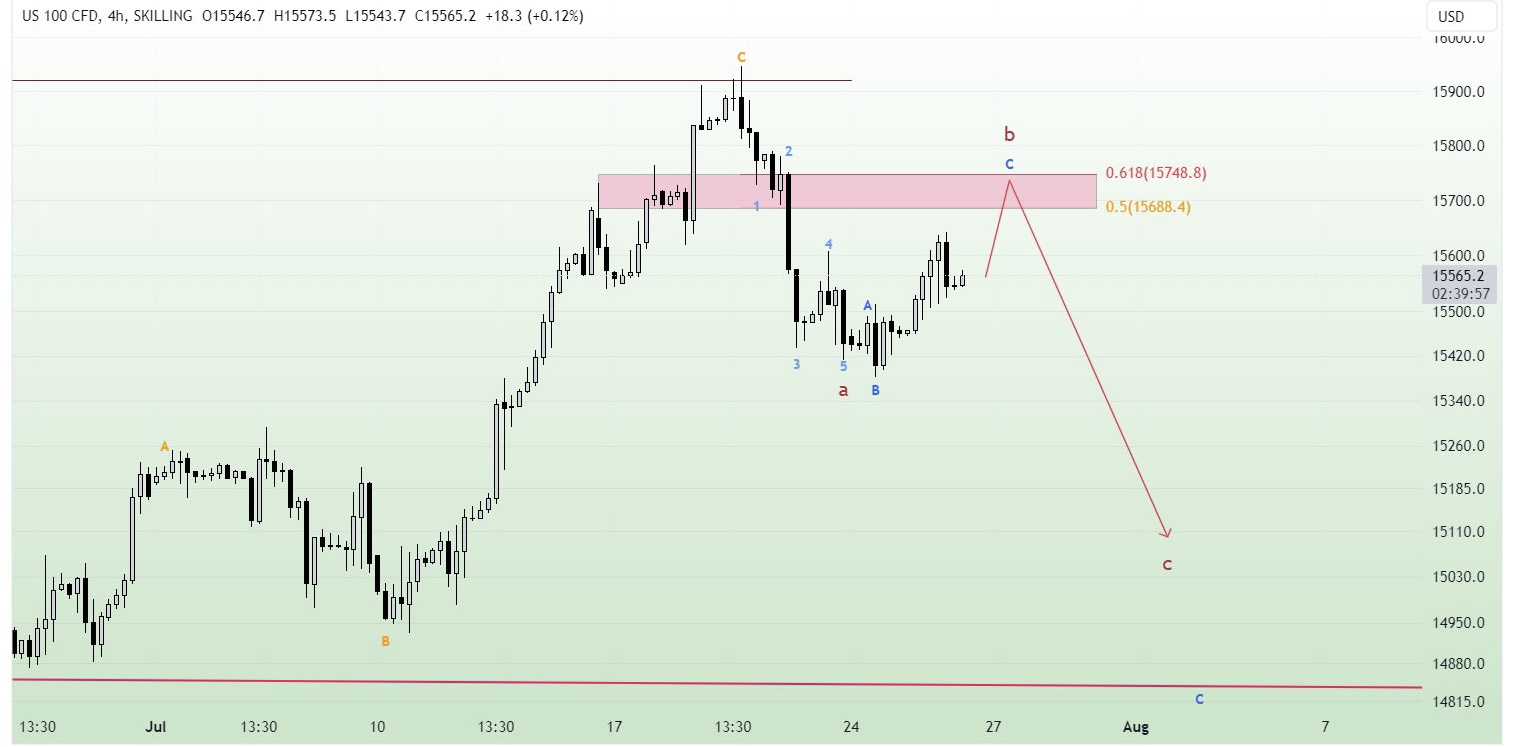Swiss Market Index (SMI) Switzerland Blue Chip Index
Parent Index
NA
Indices informations
Listed Exchanges
| SIX Swiss Exchange |
Related Instuments
| SMI Mid |
| SMI Expanded |
| SPI 20 |
| SPI |
| SLI |
Sector Represented
| Food |
| Pharmacy |
| Banks |
| Telecommunications |
| Luxury Goods |
Indices
- BSE SENSEX
- CAC 40
- CBOE NASDAQ-100 Volatility Index (VXN)
- CBOE Volatility Index (VIX)
- China50-FTSE China A50 Index
- DAX
- DAX PERFORMANCE-INDEX-GDAXI
- DE40-Germany 40 Index DAX
- Dollar Index USDX-DXY-DX-Dixie
- Dow Jones Industrial Average-DJIA
- EURO STOXX 50 SX5E
- FTSE 100 Index-UK100 Index
- Germany 30
- Hang Seng Index
- IBEX 35-Spain 35
- NASDAQ Composite
- NASDAQ-100
- Nikkei 225
- Russell 2000 Index
- S&P/ASX 200
- Singapore Blue Chip Index-STI
- Swiss Market Index (SMI) Switzerland Blue Chip Index
- TecDax Price Index
- TECHDE30-Germany Tech 30 Index
- US Tech 100 Index UT100
- US2000-US Small Cap 2000 Index
- US30-US Wall Street 30 Index
- US30M- US Wall Street 30 Index M
- US500-S&P 500 (GSPC, INX, SPX)
- US500-US SPX 500 Index
- US500M-S&P 500 Mini
- All Ordinaries
- Amsterdam Exchange Index AEX index
- ATX-Austrian Traded Index (ATX)
- BEL 20
- BELEX15
- BIRS
- BIST-Borsa Istanbul
- CROBEX
- EGX 30 Index Egypts Leading Stock Market Index
- FTSE All-Share Index
- FTSE Bursa Malaysia Index-KLCI Index
- FTSE MIB-FTSE MIB 40
- Índice Bursátil Caracas (IBC)
- Índice Bursátil de Capitalización-The General Index
- Indice de Precios y Cotizaciones
- KOSPI
- KSE 100 Index
- MDAX
- MERVAL
- MICEX-The MOEX Russia Index
- OBX Index
- OMX Copenhagen 20 (OMXC20)
- OMX Helsinki 25 (OMXH25)
- OMX Stockholm 30 (OMXS30)
- PSE Index (PSEi)
- PSI20-PSI-20
- S&P/NZX 50 Index
- S&P/TSX 60
- S&P/TSX Composite Index
- S&P/TSX Venture Composite Index
- SOFIX
- SSE Composite Index (上证综指) Shanghai Composite Index
- Straits Times Index (STI)
- SZSE Component Index (深证成指)
- TA-125 Tel Aviv 125 Index
- Taiwan Capitalization Weighted Stock Index (TAIEX)
- The Indice de Precio Selectivo de Acciones- IPC
- CBOE NASDAQ-100 BuyWrite Index (BXN)
- Hang Seng China H-Financials Index
- IBOVESPA-The Bovespa Index-Brazil Stock Exchange Index
- NASDAQ Financial-100
- SDAX – Small cap
- TecDAX
- aaa
- Amex Gold BUGS Index
- Amex Oil Index
- AScX index – Small cap
- ASE Weighted Index
- Athex 20
- Barrons 400 Index
- BELEXline
- BET-10
- BSE DCI
- BSE FCI
- BUMIX – Mid cap
- BUX – Large cap
- CA60-Canada 60 Index
- CAC All Share
- CAC All-Tradable
- CAC Large 60
- CAC Mid & Small
- CAC Mid 60
- CAC Next 20
- CAC Small
- Capital Markets Index
- CASPI
- CBOE DJIA BuyWrite Index (BXD)
- CBOE S&P 500 BuyWrite Index (BXM)
- CBV Index
- CBV Real Estate Index
- CECEEUR
- Central European Blue Chip Index – Regional large cap
- ChinaH-Hong Kong China H-shares Index
- COLCAP
- Colombo Stock Exchange Sector indices (CSE Sectors)
- CROBIS
- CSC X
- CSE 30
- CSE50
- CSI
- CSI 100 Index (中证100指数)
- CSI 300 Index (沪深300指数)
- Dow Jones Global Titans 50
- Dow Jones Transportation Average
- Dow Jones Utility Average
- DSE
- DSEX
- DSM200
- EGX 100 Index
- EGX 50 Index
- EGX 70 Index
- ERS10
- FIRS
- FT 30 Index
- FTSE 350 Index
- FTSE AIM All-Share Index
- FTSE AIM UK 50 Index
- FTSE All-World index series
- FTSE Fledgling Index
- FTSE Italia Mid Cap
- FTSE MID 250 Index
- FTSE SmallCap Index
- FTSE techMark Index
- FTSE/Athex Large Cap
- FTSE/JSE All Share Index
- FTSE/JSE Top 40 Index
- FTSEurofirst 300 Index
- FTSEurofirst Euro Supersector Indices
- GSE All-Share Index
- Hang Seng China Enterprises Index
- Hang Seng China-Affiliated Corporations Index
- HK50
- IDX Composite
- IGBC
- IPSA
- ISEQ 20-The Ireland Overall Stock Exchange Index-ISEQ20
- IT40-Italy 40 Index
- Jakarta Islamic Index (JII)
- Jamaica Stock Exchange (JSE)
- KASE
- KMI 30 Index
- KOSDAQ
- KSE All Share Index
- KSE-30 Index
- Kuala Lumpur Composite Index
- LASI
- LQ-45
- LuxX Index – Luxembourg Stock Exchange
- MADEX index
- Madrid Stock Exchange General Index
- MASI index
- MESDAQ
- MIDDE50-Germany Mid 50 Index
- MIDDE60-Germany Mid 60 Index
- Milanka Price Index (MPI)
- MSCI EAFE
- MSCI GCC
- MSCI Hong Kong Index
- MSCI World
- MSM-30
- NEPSE Index – Nepal Stock Exchange
- NETH25
- NIFTY 100 LOW VOLATILITY 30
- NIFTY 200
- NIFTY ALPHA 50
- NIFTY BANK
- NIFTY CPSE
- NIFTY ENERGY
- NIFTY FINANCE
- NIFTY FMCG
- NIFTY INDIA CONSUMPTION
- NIFTY INFRA
- NIFTY IT
- NIFTY MEDIA
- NIFTY METAL
- NIFTY MIDCAP 100
- NIFTY MIDCAP 50
- NIFTY MIDCAP LIQUID 15
- NIFTY MIDSMALLCAP 400
- NIFTY MNC
- NIFTY Next 50
- NIFTY PHARMA
- NIFTY PSE
- NIFTY PSU BANK
- NIFTY PVT BANK
- NIFTY REALTY
- NIFTY SERV SECTOR
- NIFTY SMALLCAP 100
- NIFTY SMALLCAP 250
- NIFTY SMALLCAP 50
- NIFTY100 EQUAL WEIGHT
- NIFTY100 LIQUID 15
- NIFTY200 QUALITY 30
- NIFTY50 EQUAL WEIGHT
- Nor25-Norway 25 Index
- NSE 30 Index
- NSE All Share Index
- NSE NIFTY 50
- NYSC Arca Major Market Index
- NYSE American Composite Index
- OMX Iceland 15 (discontinued)
- OMX Iceland 6
- OMX Stockholm PI (OMXSPI)
- OMX Vilnius (OMXV)
- OTCM QX ADR 30 Index
- Palisades Water Index (ZWI)
- PFTS index
- Philadelphia Gold and Silver Index
- PHLX Semiconductor Sector
- PSE All Shares Index
- PSE Financials Index
- PSE Mining and Oil Index
- PSI/GERAL
- PX Index
- RTS Index (RTSI)
- Russell 1000
- Russell 2500
- Russell 3000
- Russell MidCap
- Russell Small Cap Completeness
- S&P 100
- S&P 1500
- S&P Asia 50
- S&P BSE 500
- S&P Europe 350
- S&P Global 100
- S&P Global 1200
- S&P Latin America 40
- S&P MidCap 400
- S&P MidCap 400/BARRA Growth
- S&P MidCap 400/BARRA Value
- S&P SmallCap 600
- S&P SmallCap 600/BARRA Growth
- S&P SmallCap 600/BARRA Value
- S&P Vietnam 10 Index
- S&P/ASX 20
- S&P/ASX 300
- S&P/ASX 50
- SA40-South Africa 40 Index
- SBF 120
- SE30-Sweden 30 Index
- SET Index
- SET100 Index
- SET50 Index
- Slovak Share Index
- SMI Expanded
- SMI MID
- SPBLPGPT
- SSE 180 Index (上证180指数)
- SSE 50 Index (上证50指数)
- STOXX Europe 600
- SWI20-Switzerland 20 Index
- Swiss Leader Index (SLI)
- Swiss Performance Index (SPI)
- SZSE 100 Index (深证100指数)
- SZSE 200 Index (深证200指数)
- SZSE 300 Index (深证300指数)
- TA-35 Index
- TA-90
- Tadawul
- TEDPIX
- TEPIX
- The Global Dow
- The GSE Composite Index.
- THETAUSD Theta Network Token vs US Dollar
- TOPIX
- Trinidad and Tobago Stock Exchange (TTSE)
- UBS 100 Index
- Value Line Composite Index
- VN Index
- WIG-Warszawski Indeks Giełdowy
- WIG30
- Wilshire 4500
- Wilshire 5000
- Zimbabwe Industrial Index
- Zimbabwe Mining Index
The Swiss Market Index (SMI) is the most significant stock market index in Switzerland. It comprises the 20 largest and most liquid stocks listed on the SIX Swiss Exchange, which is the primary stock exchange in Switzerland. The SMI is a vital benchmark for investors and provides an overview of the Swiss equity market’s performance.
The SMI was introduced in June 1988 with a base value of 1,500 points. Since then, it has become a crucial indicator of the Swiss stock market’s overall direction and serves as a reference point for various investment strategies and financial products.
Components of the SMI
The SMI consists of the top 20 stocks across various sectors and industries in Switzerland. Some of the notable companies included in the SMI are Nestle, Novartis, Roche Holding, UBS Group, and ABB Ltd. These companies represent a significant portion of the Swiss market capitalization and play a crucial role in the country’s economy.
As the components of the SMI are carefully selected based on their size, liquidity, and sector representation, the index provides a comprehensive snapshot of the Swiss equity market’s performance.
Weighting and Calculation
The SMI is a price-weighted index, meaning that each component’s weight is determined by its share price rather than market capitalization. This implies that stocks with higher prices have a more substantial impact on the index’s movements.
The index is calculated using a divisor to maintain continuity and ensure comparability over time. Any corporate actions such as stock splits, rights issues, or dividends are adjusted to ensure that the index accurately reflects the market’s performance.
SMI as an Investment Tool
The SMI is widely used by investors, fund managers, and financial institutions as a benchmark for evaluating the Swiss equities market. It provides insights into market trends, risk appetite, and overall investor sentiment in Switzerland.
Many ETFs (Exchange-Traded Funds) and index funds are based on the SMI, allowing investors to gain exposure to the entire Swiss equity market or specific sectors represented within the index.
Conclusion
The Swiss Market Index (SMI) plays a crucial role in assessing the performance of the Swiss stock market. With its diverse range of components from various industries, it serves as a reliable indicator of the overall health of the Swiss equity market. The SMI is not only a valuable tool for investors but also a reflection of Switzerland’s economic landscape.
Swiss Market Index Key Data
The Swiss Market Index (SMI) is Switzerland’s leading stock market index, consisting of the 20 largest and most liquid stocks listed on the SIX Swiss Exchange. As one of the key indicators of the Swiss economy, the SMI provides insights into the performance of the country’s major companies across various sectors.
Composition of the SMI
The SMI represents a diverse range of industries including banking, pharmaceuticals, consumer goods, telecommunications, and more. Some of the prominent companies included in the index are Nestlé, Novartis, Roche Holding, UBS Group, and Credit Suisse Group. These companies play a crucial role in driving the Swiss economy and their performance significantly impacts the overall movement of the index.
Market Capitalization and Weightage
The SMI is a market capitalization-weighted index, meaning that each company’s weight within the index is determined by its market value. This ensures that larger companies have a greater impact on the index’s movements. As of [insert date], the total market capitalization of the SMI constituents was approximately [insert value], reflecting the significant size and influence these companies hold in the Swiss market.
Performance and Returns
The SMI is closely monitored by investors and financial analysts as a benchmark for the Swiss equity market. It serves as an indicator of the overall health and performance of the Swiss economy. Investors use the SMI as a reference point to assess the returns generated by their investments and make informed decisions based on market trends.
Historically, the SMI has shown resilience and stability, with consistent long-term growth. However, like any other stock market index, it is subject to fluctuations and volatility influenced by both local and global economic factors. It is crucial for investors to carefully analyze the key data and market trends before making investment decisions.
Impact of Global Events
The Swiss economy is closely intertwined with global markets, and as a result, the SMI can be impacted by major global events. Economic developments, geopolitical tensions, trade agreements, and changes in monetary policies of other countries may influence the performance of the Swiss stock market and consequently affect the SMI.
Conclusion
The Swiss Market Index serves as a vital tool for investors, traders, and financial professionals in assessing the performance of the Swiss equity market. It provides valuable key data on the largest and most influential companies listed on the SIX Swiss Exchange. Understanding the composition, market capitalization, and performance of the SMI constituents helps in making informed investment decisions and staying updated with the latest trends in the Swiss market.
Swiss Market Index (SMI) Constituents: An Overview
The Swiss Market Index (SMI) is Switzerland’s most important stock market index. It is a capitalization-weighted index consisting of the 20 largest and most liquid stocks listed on the SIX Swiss Exchange. The SMI serves as a benchmark for the Swiss equity market, reflecting its overall performance.
Key Constituents of the Swiss Market Index:
1. Nestlé SA (NESN): Nestlé is one of the world’s largest food and beverage companies, offering a wide range of products including confectionery, bottled water, dairy, and pet food. With a strong global presence, Nestlé plays a significant role in the SMI.
2. Roche Holding AG (ROG): Roche is a leading global pharmaceuticals and diagnostics company. It specializes in developing innovative healthcare solutions to address various diseases and medical conditions. Roche’s inclusion in the SMI highlights the importance of the healthcare sector.
3. Novartis AG (NOVN): As another major pharmaceutical company, Novartis focuses on research, development, and manufacturing of prescription drugs across multiple therapeutic areas. Its diverse product portfolio contributes to the stability of the SMI.
4. UBS Group AG (UBSG): UBS is one of the world’s largest wealth management banks, providing financial services to individuals, corporations, and institutions globally. It plays a vital role in the Swiss financial industry and is a key constituent of the SMI.
5. Credit Suisse Group AG (CSGN): Another prominent Swiss bank, Credit Suisse offers a wide range of financial services, including investment banking, asset management, and private banking. Its inclusion in the SMI represents the strength of the Swiss financial sector.
6. ABB Ltd (ABBN): ABB is a leading multinational technology company specializing in robotics, power, and automation technologies. With its global reach and innovative solutions, ABB contributes significantly to the Swiss engineering and technology industry.
7. Zurich Insurance Group AG (ZURN): Zurich Insurance Group is one of the world’s largest insurance companies, offering a wide range of general and life insurance products. Its inclusion in the SMI reflects the importance of the insurance sector in Switzerland.
8. Swatch Group AG (UHR): Swatch Group is a renowned Swiss watchmaker, known for its iconic brands such as Omega, Longines, and Swatch. It represents the luxury goods industry within the SMI constituents.
9. Swiss Re AG (SREN): Swiss Re is a leading global reinsurance company, providing risk transfer solutions to insurance companies worldwide. Its expertise in managing complex risks contributes to the stability of the Swiss insurance industry.
10. LafargeHolcim Ltd (LHN): LafargeHolcim is a multinational building materials company, specializing in cement, aggregates, and ready-mix concrete. As a key player in the construction industry, LafargeHolcim’s presence adds value to the SMI constituents.
Conclusion:
The Swiss Market Index (SMI) consists of 20 major Swiss companies across different sectors, providing investors with a comprehensive view of the Swiss equity market. These constituents represent a diverse range of industries, including food and beverages, pharmaceuticals, banking and finance, technology, insurance, luxury goods, and construction. The inclusion of these companies in the SMI reflects their significance in the Swiss economy and their contribution to the overall market performance.
Fundamental Summary
SMI
0.00000


Strength
SMI
0.00000


Strength
SMI
0.00000


Strength
SMI
0.00000


Strength
SMI
0.00000


Strength
SMI
0.00000


Strength
SMI
0.00000


Strength
SMI
11497.99000


Strength
-
SMI
Minute5
 short
shortResistance3 10988.80000 Resistance2 10968.00000 Resistance1 10927.09000 Quote Price 0.00000 Support1 10902.09000 Support2 10889.49000 Support3 10867.99000 Next Trade2023-10-16 00:29:57 -
SMI
Minute15
 short
shortResistance4 11067.70000 Resistance3 10988.80000 Resistance2 10968.00000 Resistance1 10927.09000 Quote Price 0.00000 Support1 10902.09000 Support2 10867.99000 Next Trade2023-10-16 00:29:58 -
SMI
Minute30
 long
longResistance2 11047.20000 Resistance1 11015.80000 Quote Price 0.00000 Support1 10910.99000 Support2 10805.90000 Support3 10729.00000 Support4 10692.29000 Next Trade2023-10-16 00:30:00 -
SMI
Hour1
 short
shortResistance4 10692.29000 Resistance3 10729.00000 Resistance2 10692.29000 Resistance1 10729.00000 Quote Price 0.00000 Support1 11015.80000 Support2 11220.10000 Next Trade2023-10-16 00:30:03 -
SMI
Hour4
 short
shortResistance1 10692.29000 Quote Price 0.00000 Support1 11015.80000 Support2 11047.20000 Support3 11245.00000 Support4 11401.40000 Support5 11449.50000 Next Trade2023-10-16 00:30:04 -
SMI
Daily
 long
longResistance3 11615.60000 Resistance2 11401.40000 Resistance1 11245.00000 Quote Price 0.00000 Support1 10692.29000 Support2 10392.50000 Support3 10007.09000 Next Trade2023-10-16 00:30:06 -
SMI
Weekly
 long
longResistance2 13003.49000 Resistance1 11615.60000 Quote Price 0.00000 Support1 10692.29000 Support2 10392.50000 Support3 10007.09000 Support4 10336.69000 Next Trade2023-10-28 19:11:50
- Coming soon!!
Technical Summary
SMI
0.00000


Strength
SMI
0.00000


Strength
SMI
0.00000


Strength
SMI
0.00000


Strength
SMI
0.00000


Strength
SMI
0.00000


Strength
SMI
0.00000


Strength
SMI
11497.99000


Strength
-
SMI
Minute5
 short
shortResistance3 10988.80000 Resistance2 10968.00000 Resistance1 10927.09000 Quote Price 0.00000 Support1 10902.09000 Support2 10889.49000 Support3 10867.99000 Next Trade2023-10-16 00:29:57 -
SMI
Minute15
 short
shortResistance4 11067.70000 Resistance3 10988.80000 Resistance2 10968.00000 Resistance1 10927.09000 Quote Price 0.00000 Support1 10902.09000 Support2 10867.99000 Next Trade2023-10-16 00:29:58 -
SMI
Minute30
 long
longResistance2 11047.20000 Resistance1 11015.80000 Quote Price 0.00000 Support1 10910.99000 Support2 10805.90000 Support3 10729.00000 Support4 10692.29000 Next Trade2023-10-16 00:30:00 -
SMI
Hour1
 short
shortResistance4 10692.29000 Resistance3 10729.00000 Resistance2 10692.29000 Resistance1 10729.00000 Quote Price 0.00000 Support1 11015.80000 Support2 11220.10000 Next Trade2023-10-16 00:30:03 -
SMI
Hour4
 short
shortResistance1 10692.29000 Quote Price 0.00000 Support1 11015.80000 Support2 11047.20000 Support3 11245.00000 Support4 11401.40000 Support5 11449.50000 Next Trade2023-10-16 00:30:04 -
SMI
Daily
 long
longResistance3 11615.60000 Resistance2 11401.40000 Resistance1 11245.00000 Quote Price 0.00000 Support1 10692.29000 Support2 10392.50000 Support3 10007.09000 Next Trade2023-10-16 00:30:06 -
SMI
Weekly
 long
longResistance2 13003.49000 Resistance1 11615.60000 Quote Price 0.00000 Support1 10692.29000 Support2 10392.50000 Support3 10007.09000 Support4 10336.69000 Next Trade2023-10-28 19:11:50

